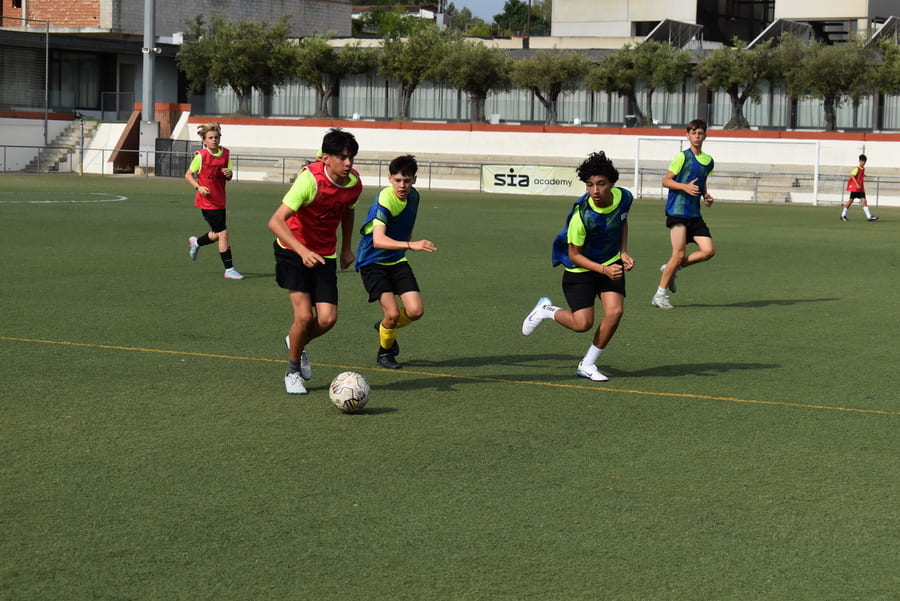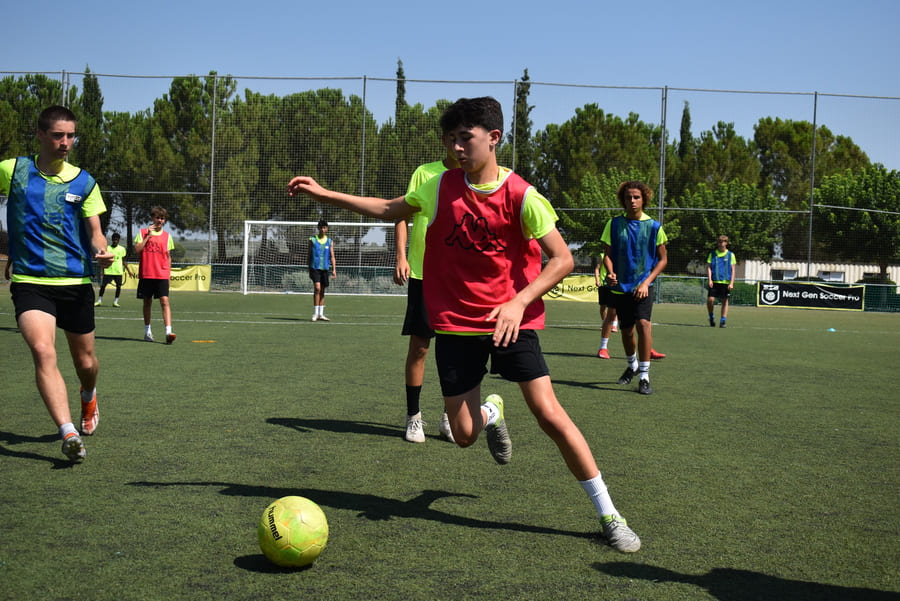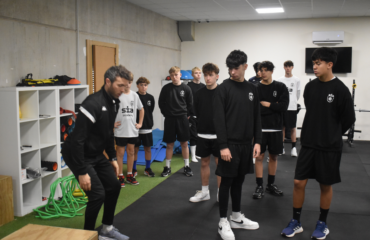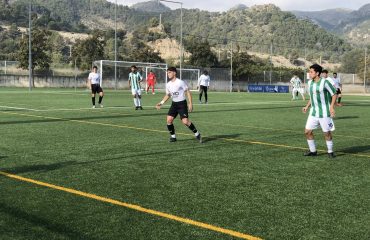In modern football, one of the most complex and decisive roles is that of the defensive pivot. This player operates just ahead of the defensive line, and their main function is to balance the team: protect the central zone, organize the build-up, cut counterattacks, and give fluidity to the game.
The defensive pivot is, essentially, the team’s defensive brain. Unlike a creative midfielder or a box-to-box player, their mission isn’t to stand out, but to make others play, recover balls, and be well positioned at all times. Their contribution is measured more by correct decisions than flashy statistics.
At SIA Academy, this role is worked on with special detail, since it represents a key position to understand the game tactically, physically, and technically. Below, we explore what a defensive pivot must do to stand out and how a high-performance academy like SIA develops this position.
Table of contents
Understanding the game: the pivot as a reader of situations
The first attribute a defensive pivot must master is game reading. It’s not enough to have good technique or physicality; this player needs to anticipate what is going to happen. Where will the second ball fall? Which passing lane will open? Where is the free space?
At SIA Academy, the pivot works with specialized tactical coaches who teach them to identify offensive and defensive patterns. Through video analysis and situational drills, they train the ability to interpret match contexts in real time.

Smart positioning: being where you have to be
The key to a good pivot isn’t to run more than anyone else, but to position yourself better than everyone else. Their body must be well oriented, the distance from the center-backs and midfielders must be exact, and their coverage angle must block rival passing lanes.
At SIA Academy training sessions, specific positional adjustment exercises are performed. For example, in small-sided tasks, the pivot works on how to position themselves when receiving, how to close the passing line to the opposing striker, and how to always offer a safe passing option to the center-backs.
Recovery and controlled aggression
Although the pivot isn’t always the one who runs the most, they must be the one who recovers the most balls through reading and timing. This means entering hard but without unnecessary fouls, cutting rival transitions, and stopping counterattacks with tactical intelligence.
At SIA Academy, they train with specific positional defense and dueling sessions. Realistic scenarios of ball loss are simulated where the pivot must decide whether to press, contain, or drop back. Additionally, the ability to commit “tactical fouls” at the right moment is worked on.
Useful technique: quick passing and oriented control
A pivot doesn’t need to do fancy moves. What they must do is pass quickly, with precision, and know how to control the ball in tight spaces. A good first touch and a clear vision of their surroundings are essential for the team to play out from the back without errors.
At SIA Academy training, emphasis is placed on decision-making under pressure, with intense rondo exercises, build-up play in the first zone, and positional play. The goal is for the player to master short and medium passing with both feet, and to know when to risk or maintain possession.
Connection with center-backs and midfielders
The pivot is a link. They cannot play isolated. They must constantly communicate with defenders, receive between the lines, and always offer a passing lane to the interior midfielders. When this connection is missing, the team splits.
At SIA Academy, coordination between lines is trained using conditioned games where the pivot must alternate between dropping to receive from center-backs or projecting forward depending on the play. They are taught to be flexible and interpret what the team needs at each moment.
Efficient physique: endurance and changes of pace
Although not a player who stands out for top speed, the pivot must have great aerobic endurance, strength in duels, and the ability to change pace. Many times they must react in seconds to cover a pass or cut an advance.
At SIA Academy, pivots have personalized strength-endurance plans, focusing on core stability, short movements, and acceleration improvement. The physical training is worked on to be functional to the role, not just to be fit.

Low profile, high influence
The defensive pivot rarely gets praise. But when missing, the team feels it. It is a low-profile player but of enormous collective influence. Therefore, their training must be integral: technical, tactical, physical, and communicative.
At SIA Academy, this profile is respected and enhanced. Coaches not only correct technical details but also promote tactical responsibility and constant communication, two key values of the modern pivot.
Being a defensive pivot is not just a position, it’s a way of understanding football. And at SIA Academy, this role is trained as what it is: a central piece of the modern game. With a methodology that combines advanced tactics, applied technique, and specific physical work, the academy forms players who will be the silent brains on the field.
Do you want to become a true organizer from the grassroots? SIA Academy trains you to master every detail of being a defensive pivot.






